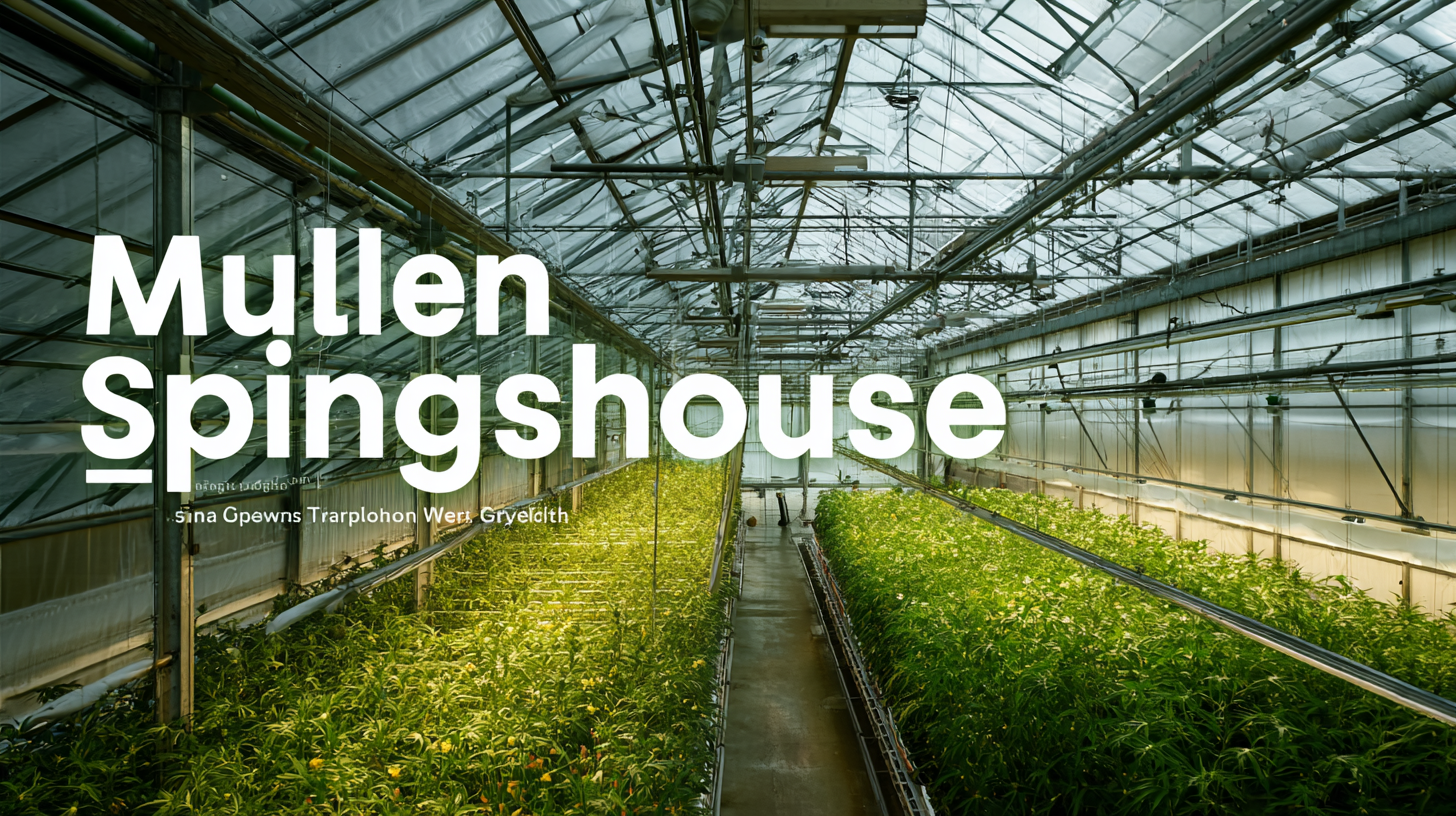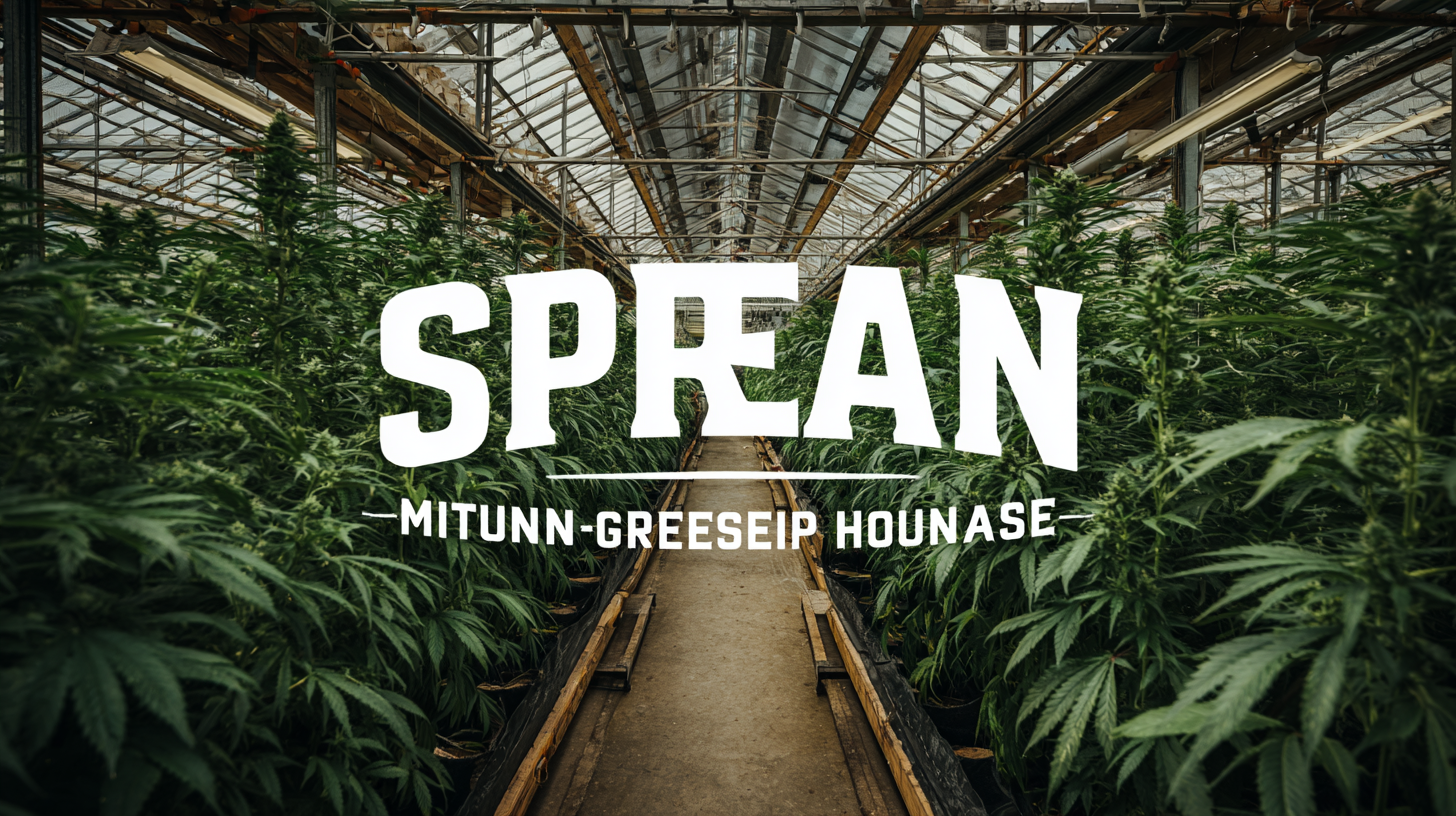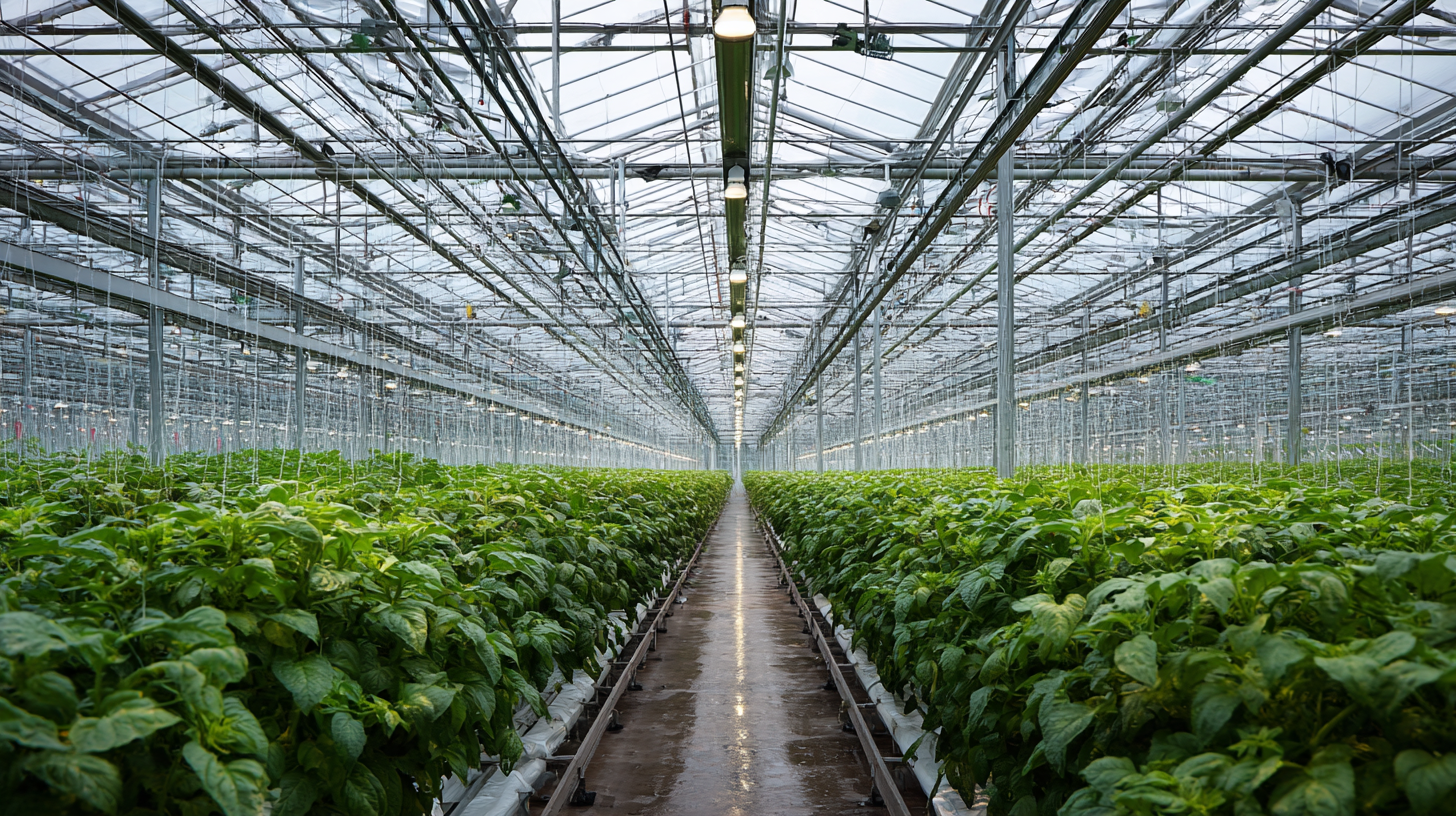
2025 Market Insights: How the Best Multi-Span Greenhouses are Shaping Global Agriculture Trends
As global agriculture continues to evolve in response to population growth and climate change, the emergence of innovative cultivation techniques is crucial for sustainable food production. Among these, Multi-Span Greenhouses have become a vital component in shaping modern agricultural practices. According to the 2022 Global Greenhouse Market Report, the Multi-Span Greenhouse segment is expected to witness significant growth, projected to reach a market value of $2.5 billion by 2025, driven by increasing demand for fresh produce and the need for efficient use of land and resources. These structures not only optimize environmental control but also enhance crop yield and quality, making them instrumental in meeting food security challenges worldwide. This blog delves into how the best Multi-Span Greenhouses are influencing global agriculture trends and highlights examples that are setting benchmarks in the industry.

The Rise of Multi-Span Greenhouses in Modern Agriculture
The rise of multi-span greenhouses is significantly reshaping modern agriculture, aligning with global trends towards sustainable farming practices. According to a report by MarketsandMarkets, the greenhouse market is expected to grow from USD 32.5 billion in 2020 to USD 41.5 billion by 2025, driven in part by the increasing demand for fresh produce and the need for more efficient farming solutions. Multi-span structures, which consist of multiple connected arches, enable larger cultivation areas and greater operational efficiency, making them an attractive option for both commercial growers and small-scale farmers.
Furthermore, these greenhouses enhance environmental control, allowing for optimal growing conditions year-round. A recent study by the Agricultural Research Service highlighted that multi-span greenhouses can result in a yield increase of up to 30% compared to traditional single-span greenhouses. This is largely due to their improved airflow, light distribution, and temperature regulation. As climate change poses challenges to traditional agriculture, the adaptability and resilience provided by multi-span greenhouses position them as a key player in the future of farming, promoting not only higher productivity but also sustainable agricultural practices worldwide.
2025 Market Insights: How the Best Multi-Span Greenhouses are Shaping Global Agriculture Trends
| Country | Total Area (ha) | Annual Yield (tons) | Market Growth (%) | Key Crop Type |
|---|---|---|---|---|
| USA | 15,000 | 250,000 | 10% | Tomatoes |
| Netherlands | 11,000 | 200,000 | 12% | Cucumbers |
| Spain | 9,500 | 150,000 | 8% | Bell Peppers |
| China | 20,000 | 400,000 | 15% | Lettuce |
| Turkey | 8,000 | 100,000 | 9% | Eggplants |
Key Advantages of Multi-Span Greenhouses for Global Crop Production
 Multi-span greenhouses are revolutionizing global crop production by offering several key advantages that are crucial for modern agriculture. These structures provide an efficient environment for growing a variety of crops, facilitating better air circulation, temperature regulation, and sunlight distribution. This leads to optimized growth conditions, resulting in higher yields and improved crop quality. Farmers can also benefit from increased automation capabilities, which enhance labor efficiency and reduce the overall cost of production.
Multi-span greenhouses are revolutionizing global crop production by offering several key advantages that are crucial for modern agriculture. These structures provide an efficient environment for growing a variety of crops, facilitating better air circulation, temperature regulation, and sunlight distribution. This leads to optimized growth conditions, resulting in higher yields and improved crop quality. Farmers can also benefit from increased automation capabilities, which enhance labor efficiency and reduce the overall cost of production.
Tip: When selecting a multi-span greenhouse, consider the local climate and the specific crops you wish to cultivate. Customizing your greenhouse design to your regional needs can maximize your productivity and minimize potential losses from adverse weather conditions.
Moreover, multi-span greenhouses are known for their sustainability features. They often use materials and systems that reduce energy consumption and water usage, making them eco-friendly options for farmers. Implementing advanced irrigation techniques and renewable energy solutions within these structures can significantly contribute to sustainable farming practices.
Tip: Invest in technology that provides real-time data on environmental controls within your greenhouse. Monitoring factors like humidity and temperature can help you make informed decisions, ensuring your crops thrive while minimizing resource waste.
Technological Innovations Driving Multi-Span Greenhouse Efficiency
As we move towards 2025, the agricultural landscape is being transformed by the integration of cutting-edge technology in multi-span greenhouses. These innovative structures are designed not only to maximize space but also to enhance productivity through automation and climate control systems. Techniques like automated irrigation, advanced temperature regulation, and real-time monitoring are enabling farmers to create optimal growing conditions, which are crucial for sustainable agriculture.
Moreover, technological advancements such as AI and IoT are playing a significant role in increasing the efficiency of these greenhouses. Smart sensors gather data on soil moisture and nutrient levels, allowing for precise resource management. This not only leads to higher crop yields but also minimizes waste, aligning with the global push for environmentally sustainable practices. As these technologies continue to evolve and become more accessible, multi-span greenhouses are poised to redefine farming methodologies, making them more resilient and responsive to climate challenges.
2025 Market Insights: Multi-Span Greenhouses Efficiency
Sustainability Trends in Multi-Span Greenhouse Design and Operation
As the agricultural sector continues to evolve, sustainability trends in multi-span greenhouse design and operation are taking center stage. According to a report by Research and Markets, the global greenhouse market is projected to reach USD 43.04 billion by 2025, driven largely by the increasing demand for sustainable agricultural practices. Multi-span greenhouses, with their ability to optimize space and resource use, are leading the way in enhancing the efficiency of crop production while minimizing environmental impact.
One of the key sustainability trends is the integration of advanced climate control systems, which allow for precisely regulated temperature and humidity levels. A study from the International Journal of Greenhouse Gas Control notes that these systems can reduce water use by up to 30% compared to traditional methods. Additionally, the incorporation of renewable energy sources, such as solar panels, enables growers to power their operations sustainably. As highlighted by the Global Sustainable Energy Partnership, utilizing renewable energy can decrease operational costs by up to 40%, further incentivizing the shift towards greener practices.
Furthermore, the focus on resource recycling within multi-span greenhouses is gaining momentum. By adopting hydroponic and aquaponic systems, farmers can significantly reduce water waste and enhance nutrient delivery to plants. The USDA reports that such systems can utilize up to 90% less water than conventional soil farming methods. As these trends continue to shape the future of global agriculture, the commitment to sustainability within multi-span greenhouse operations stands to offer significant benefits for both the environment and the agricultural economy.
Future Prospects: Influencing Factors for Multi-Span Greenhouses by 2025
 Multi-span greenhouses are increasingly positioned to influence global agriculture trends by 2025, driven by several key factors. The recent advancements in greenhouse technology are significant; for instance, innovations in intelligent glasshouses in China not only yield higher productivity but also reduce energy consumption by over 50%. These improvements are essential for addressing the challenges posed by climate change and ensuring food security in harsh weather conditions. Reports of successful crop yields, like strawberries and citrus fruits in extreme winter temperatures of regions such as Altay, illustrate the growing dependency on these structures.
Multi-span greenhouses are increasingly positioned to influence global agriculture trends by 2025, driven by several key factors. The recent advancements in greenhouse technology are significant; for instance, innovations in intelligent glasshouses in China not only yield higher productivity but also reduce energy consumption by over 50%. These improvements are essential for addressing the challenges posed by climate change and ensuring food security in harsh weather conditions. Reports of successful crop yields, like strawberries and citrus fruits in extreme winter temperatures of regions such as Altay, illustrate the growing dependency on these structures.
Additionally, international collaborations, such as the partnership between agricultural companies in the UAE and Chinese firms, highlight a shift towards smart agriculture. The integration of cutting-edge technology, from automated climate control to enhanced crop management systems, is revolutionizing greenhouse operations. Local initiatives across various regions, including advancements in facility designs that adapt to diverse climates, further support the growth of multi-span greenhouses. As these technologies become more accessible, we can expect a significant transformation in agricultural practices worldwide, fostering sustainability and resilience in food production systems.
